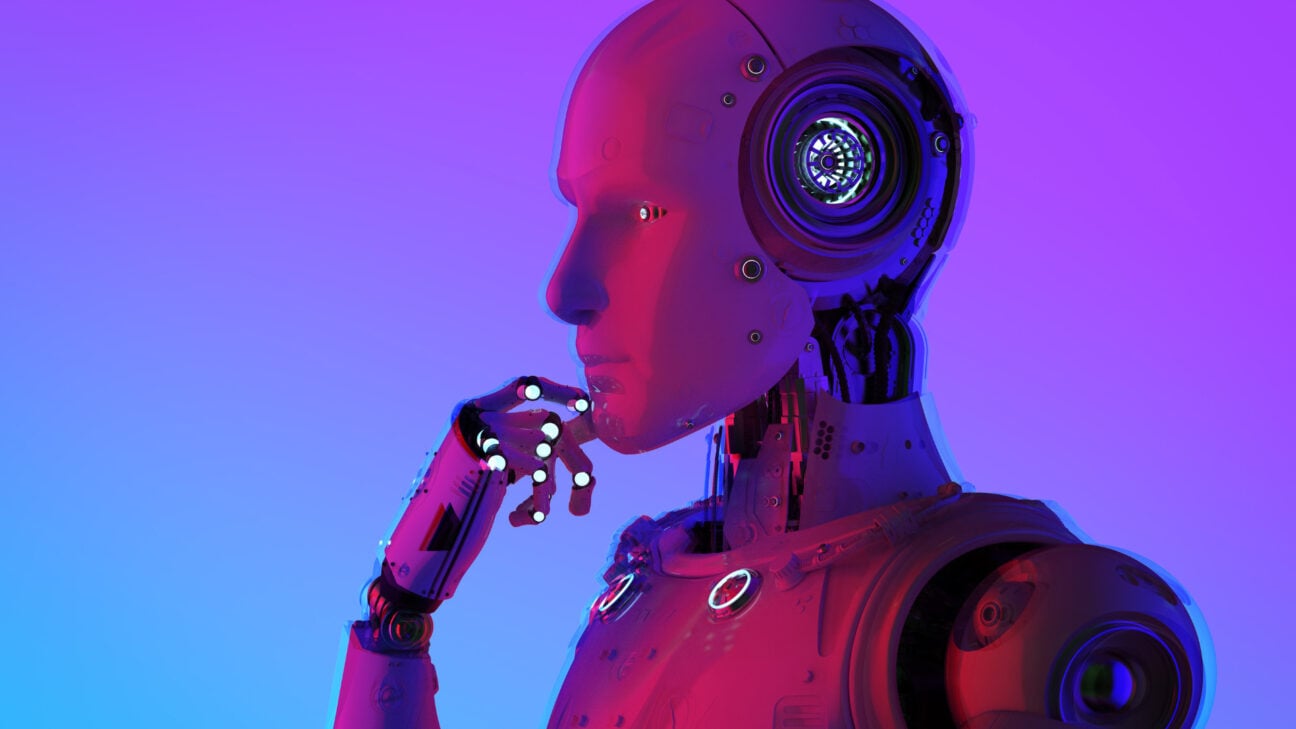
Over the past few years Artificial Intelligence (AI) has become more advanced. The field is advancing so rapidly, that it’s probably changed dramatically in just the past few days or even hours. Many in the creative industry are reflecting on how AI will affect graphic designers. Fundamentally we’re asking: will AI take our jobs?
You’re already using AI every day
We all currently use AI as part of our day-to-day without even realising it! Take Netflix, for example. This uses AI algorithms to create personalised recommendations of TV programs and films that you might like based on your activity. And usually the recommendations are pretty good, right? But did you even know this was AI?
Well-known brands and corporations have also begun to use AI to improve their customer experience. AI can help to give tailored recommendations and make it easy to contact someone using a chatbot system.
So, what is AI?
Artificial Intelligence (AI) combines computer science and datasets to enable problem-solving. It is the theory and development of computer systems that can perform tasks normally requiring human intelligence. These include decision making and visual perception.
Can AI benefit graphic designers?
As the world of design is constantly evolving with new trends, programs and skillsets, the role of a graphic designer is evolving, too. As AI comes in to play, there are lots of questions about how it can be used as a tool instead of being seen as a threat to the industry.
Let’s look at how AI could benefit designers.
Automation
AI can automate those tedious tasks that can take up a lot of time! We’re talking image resizing and colour correction. AI can do these quickly and efficiently, allowing you more time to be creative.
In terms of design, we have all seen that AI does have the capacity to design visuals. But it can also automate multiple layouts. This could be useful for designers, especially during the initial ideas process. It will give them multiple options to pull inspiration from quickly, instead of spending a lot of time looking for inspiration on the internet.
Analyse data
AI is a great tool to use for analysing data. But how can this be used within design?
AI algorithms can analyse data and generate designs tailored to specific audiences and demographics. This makes the design process more effective.
This can again save the designer time, but one thing AI can’t do is add a human touch. AI can’t liaise with clients or take on their thoughts and feedback. It’s difficult to build a relationship and rapport with a robot!
While the AI algorithms may be helpful in generating initial ideas, a designer will then be able to develop them. A graphic designer can add a unique, personalised touch making sure that the design fits the brief.
Push the boundaries!
Those tasks that required a specific skillset and the time to develop and master manually, are now easily accessible to designers, thanks to AI tools. Tasks such as complex animations and interactive design can now be completed, opening new possibilities and development opportunities for designers.
Those crazy visuals you thought about for a client, but didn’t have the tools for, could now be possible without hours of studying.
So, are graphic design jobs safe from AI?
We’ve seen that AI can benefit a designer. But is it going to replace a human within graphic design in the next few years?
No, we don’t think so! AI can’t replace the human touch and creative genius of a designer. But it can be used alongside designers to create new opportunities.
Not only will it benefit designers, but it will benefit their clients, too. Visuals that you once thought would have been impossible to create are now possible.
There are pros and cons of using AI, but if it is used in the right way it could be a powerful tool to use within the world of design.